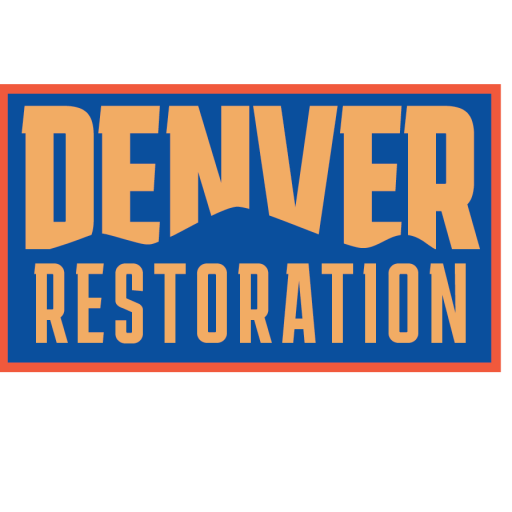Why Building Flood Resilience is Important?
Building resilience against floods is crucial. It’s not just about staying afloat during a disaster, but also ensuring that the aftermath is manageable. Floods can cause severe water damage leading to mold growth, structural damage, and even harm to your health. This necessitates the importance of appropriate prevention strategies and restoration techniques.
Pre-Flooding Planning: Key to Flood Resilience
Prevention is better than cure. This rings true when it comes to dealing with potential floods. Prior planning can give you a fighting chance to minimize damages. Here are some tips to ensure flood resilience:
1. Know Your Risks: Understanding the degree of flood risk in your area is the first step.
2. Ensure Insurance Coverage: Verify that your property insurance covers flood-related damages. Learn about managing insurance claims for water damage comprehensively here.
3. Waterproof Your Property: Invest in waterproofing solutions such as sealants and barriers to protect your property from water damage.
Expert Tips to Build Flood Resilience
While flood prevention measures are important, building resilience involves more than just focusing on immediate solutions. Here’s some expert advice:
Regular Property Assessment
Ensure that you conduct a regular property assessment to track any potential vulnerabilities that may lead to water damage. This includes checking for structural damages, leaks, or signs of mold growth. Understand the process of mastering moisture control effectively here.
Invest in Restoration Equipment
Investing in restoration equipment such as dehumidifiers, sump pumps, and water detectors can help prevent extensive water damage in the event of a flood.
Develop an Emergency Plan
Ideally, an emergency plan should cover evacuation routes, emergency contacts, and a list of necessary supplies to have on hand. Knowledge of handling fire damages during emergencies can be incredibly helpful too read more.
Stay Abreast of Weather Updates
Keeping an eye on weather updates especially during the rainy season is critical. Familiarize yourself with flood watches, flood warnings, and emergency advisories issued by your local weather station.
Empowering Communities with Flood Resilience
Building flood resilience isn’t just individual work. It requires effort from the entire community. Encourage your local community to participate in flood resilience campaigns and take active measures to prevent flood damage. You can refer them to resources such as the Flood Resilience Guide by the EPA.
The Role of Professionals in Building Flood Resilience
While individual efforts are crucial in building flood resilience, the role of professionals cannot be understated. Expert advice and services can help in efficient damage assessment, thorough restoration, and preparation for future risks.
Ensure Safety during Restoration
In the unfortunate event of a flood, the safety of everyone involved in the restoration process should be the utmost priority. Following guidelines for Environmental and Health Safety is important.
Legal Compliance in Restoration
Legal compliance is another significant aspect of the restoration process. Make sure the restoration practices adhere to the local laws and regulations to avoid potential legal issues.
Building flood resilience is a continuous process, demanding consistent efforts and vigilance. The path might seem arduous, but the reward is the strength and peace of mind in knowing that you have done everything possible to protect and secure your home against potential floods.
Keys to Damage Assessment and Estimation
After a flooding event, damage assessment and estimation are critical initial steps in the restoration process. However, it’s not something for the untrained or uninformed. Here are key points to remember:
1. Thorough Damage Assessment: The assessment should be comprehensive, done room by room and from all angles. If necessary, engage a professional inspector to ensure nothing is overlooked.
2. Documenting Damages: Detailed documentation of the damages is essential for insurance purposes. Take a lot of clear, well-lit photographs. Here are meticulous homeowners who successfully documented their water damage.
3. Estimation: Proper estimation of the cost of restoration is vital. Be sure to seek professional help to ensure accurate estimates.
Fundamental Restoration Techniques and Equipment
The restoration process following a flood can be demanding and requires specialized equipment and techniques.
1. Water Extraction: Specialized water extraction equipment is used to remove standing water and excess moisture. This is the initial step in the drying process.
2. Drying and Dehumidifying: The use of air movers and dehumidifiers are critical to thoroughly dry out the affected areas and prevent secondary damage like mold growth.
3. Sanitizing: After water extraction, the next step is to thoroughly sanitize and decontaminate the affected areas to prevent potential health issues.
4. Restoration: This involves repairing or replacing damaged materials such as drywall, ceiling tiles, carpet, and other affected areas. See here for useful tips on navigating the mold testing process during restoration.
Environmental and Health Safety Considerations
Flooding events can present serious environmental and health safety issues, as flood waters may be contaminated with sewage, chemicals, and other hazardous substances. It is essential to:
1. Use Appropriate Protective Gear: Always use gloves, masks, and boots when handling flood-damaged items.
2. Health Risks: Pay attention to potential health risks such as allergies and infections that might result from exposure to mold and contaminated water.
3. Disposal of Contaminated Materials: Ensure proper disposal of any materials contaminated by flood water to prevent further environmental contamination.
Insurance and Legal Compliance: Ignorance Isn’t Bliss
Proper adherence to insurance and legal compliance is important in the restoration process to avoid any potential issues in the future. Here are some pointers:
1. Insurance Compliance: Understanding what is covered by your insurance is a crucial first step in dealing with flood damage. Get familiar with your policy, and if needed, seek expert advice.
2. Legal Compliance: Following local ordinances and regulations regarding restorations is fundamental. Be aware of permit requirements for certain repairs and hazardous material disposal regulations.
3. Professional Help: Don’t hesitate to seek professional help like legal counsel and restoration companies to ensure adherence to all compliance issues. You can read more about insurance claims for water damage here.
Customer Communication and Crisis Management in the Face of a Flood
Should a flood occur, it’s important to communicate effectively with all involved parties to manage the situation.
1. Transparent Communication: Be clear and transparent about the extent of the damage and the steps that will be taken for restoration.
2. Crisis Management: Managing a flood crisis effectively involves keeping everyone informed about the progress of restoration efforts, being available to answer queries, and providing reassurance throughout.
3. Aftercare: Even after restoration works are complete, ensure to maintain open communication lines to address any potential concerns post-restoration.
The process of building flood resilience, while it may seem daunting, is a necessary and worthwhile endeavor. In the face of a flood, your preparedness, knowledge, and resilience can make all the difference. As we progress, it’s our collective responsibility to safeguard our homes and communities from the devastating effects of floods.
Remember, building flood resilience is not a one-off activity but a continuous process that demands our attention and energy. After all, “Fortune favors the prepared mind.” Stay vigilant, stay resourceful, and most importantly, stay resilient. Once you’ve taken appropriate measures, you can enjoy the peace of mind that comes with knowing your home is protected against potential floods.

